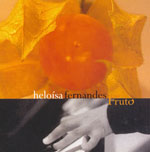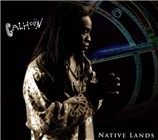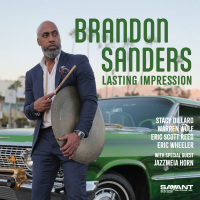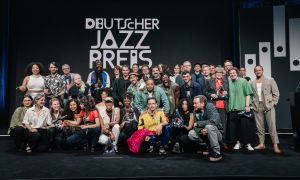Home » Jazz Articles » Jazzin' Around Europe » Polish Jazz for Dummies: 60 Years of Jazz from Poland
Polish Jazz for Dummies: 60 Years of Jazz from Poland
After 1945, like the rest of the Eastern and Central Europe, Poland fell under the dominance of Stalinist Russia— and the Soviets certainly did not dig the swing!! Consequently, only certain musical forms were allowed to flourish, particularly those with folk rhythm, without syncopation. One tempo was prescribed for everybody and army marching bands rose in importance. The process of political and cultural oppression intensified after 1949 and jazz music was outlawed as the music of the enemy. In Stalinist Poland, jazz music was banned along with modern art, decent toilet paper and the right to travel abroad.
Thankfully, not everybody toed the party line. Young people in Poland with no taste for Russian recipes and political doctrines rediscovered jazz. Being banned and sometimes even persecuted, jazz went underground, or, as was said, into "the catacombs." Jazz could only be played at private homes and private parties. Since the late 1940s, jazz has embraced the spirit of independence, nonconformity and cosmopolitanism in Poland.
One band came to dominate the hidden landscape of the Polish jazz scene. The name of this group was Melomani ("the Music Aficionados"). The ensemble was established in 1947 from among the hippest cats of the day. Many of them were students of the Lodz Film School, famous for establishing one of the leading European film movements and commonly referred to as the "Polish School." Musicians of the Melomani hung out at the Lodz YMCA, one of the few existing oases for nonconformists and independent thinkers in the Poland of late 1940s.
The lineup of Melomani fluctuated and many musicians passed through the band. Having been separated from the development of western jazz and without any jazz recordings or publications, Melomani played the sort of music that they thought was jazz, such as Jelly Roll Morton and W.C. Handy. The quality of the music, technical abilities of musicians and obsolete repertoire would not have met the standards of any reputable jazz club in Western Europe or the United States at the time. But that did not matter for Melomani's fans. They embraced it because it was illegitimate and because it was theirs.
Still, of course, there was no jazz music on the Polish radio, no jazz records in the stores, no books and no sheet music for sale. However, there was the will, the enthusiasm and the Voice of America. Instead of listening to reports about the success of the Soviet Union and achieving heaven on earth, jazz fans and aspiring jazz musicians tuned their Soviet-made radios to Willis Conover programs. For Polish jazz devotees of the late '40s and early '50s Poland, Willis Conover was a musical messiah. Conover's programs allowed access to the desired alternative: the right stuff and the real thing. His contribution to Polish jazz would never be forgotten.
1950s
After Stalin's death in 1953, the perception of jazz in Poland changed. It became acceptable to listen to jazz, to talk about jazz, to write about jazz and, most importantly, to play jazz. Polish Radio resumed its national broadcasts of the swing concerts. Official jazz festivals began to appear in the second part of the 1950s. The first legal jazz gathering took place in Krakow on November 1st 1954. Other events soon followed. The first official jazz festival took place in Sopot in 1956 and initiated a tradition of regular jazz festivals in Poland.
In the late 1950s, for the first time, jazz fans in Poland had a chance to listen to musicians from outside of the country. This changed everything, especially the perception and interpretation of what was jazz and what it wasn't. The foreign musicians that came to Poland in those early years -and what they played -had an extremely important influence on the development of jazz in Poland. Dave Brubeck was one of the first, visiting in 1958. Consequently, his brand of "cool" jazz influenced a generation of Polish jazz musicians and fans.
In February 1956, after having overcome many difficulties, the first issue of the monthly music magazine called Jazz was published in Poland. Created by chief editor Jan Balcerak, Jazz magazine came to be the only jazz magazine published behind the Iron Curtain. Polish journalists finally got a forum where they could not only write strictly informational texts, but could also venture into the previously unreachable territory of daring polemics.
Another development in the Polish jazz scene of the 1950s was the creation of the first official jazz clubs. Amongst the most prominent were Stodola and Hybrydy in Warsaw. For the next few decades, these jazz clubs were thriving venues. Young jazz enthusiasts, such as Jan Borkowski of Hybrydy fame, got their own format where they were able to cultivate their love of jazz and hunger for western culture. By the end of the 1950s, the jazz clubs in Poland had created their own first semi-official association: the Polish Jazz Federation, with bassist Jan Byrczek at the helm.
One man was especially important for jazz to develop and become an important fixture in the Polish cultural landscape: Leopold Tyrmand, a writer and enfant terrible of Warsaw's cultural elite. Well dressed and articulate, he was fiercely anticommunist and very knowledgeable on the subject of jazz music. Tyrmand wrote and published the first books and articles about jazz in Poland, helped to organize the initial jazz gatherings and is credited with the creation of the most famous festival, the Jazz Jamboree.
1960s
Growing from its infancy into the 1960s, Polish jazz became more diverse, more sophisticated and more stylish. Along with the political stabilization of "real socialism" in Poland, art and culture began to stabilize as well. During the 1960s, Polish jazz evolved into three basic styles: Dixieland (traditional), straight-ahead (mainstream), and avant-garde (free).
Many bands played their own version of "the original New Orleans style" of jazz, basically mimicking the Dixieland revival that had taken place earlier in Western Europe. They toured frequently, recorded many popular records and helped Polish jazz gain acceptance amongst the wider public. As time passed, Dixieland jazz became more professional and produced many excellent players.
The increased interest in jazz also blossomed into a growing acceptance of more demanding styles. It is difficult to clearly mark the distinction between mainstream and avant-garde jazz in the Polish jazz of the 1960s and 1970s; too many musicians walked the fine line between the two. Perhaps the best approach to analyze the modern jazz in Poland is to focus on its leading figures.
Not surprisingly, Komeda, Kurylewicz and Trzaskowski, all of them formerly of Melomani, became leading figures. Interestingly, another "giant" of Melomani fame, "Dudus" Matuszkiewicz, initially followed a much more lucrative livelihood as a composer of popular music for television and cinema but later on came back to his first love -jazz. During the 1960s, both Kurylewicz and Trzaskowski were exponents of the so-called Third Stream, the hybrid of jazz and philharmonic music. This fascination with more "serious" music and an attraction to contemporary techniques of composition overlapped with composers of contemporary Polish music such as Baird, Schoefer and Penderecki. Although controversial and not always satisfying, Third Stream experiments expanded the vocabulary of jazz and enhanced both artistic sensitivity and its overall image.
Krzysztof Komeda's role in Polish jazz cannot be explained in merely a few words. Genius, composer, visionary, collaborator and leader cannot fully describe him. How could this very average pianist and rather dull improviser with a medical degree make such a great impact on Polish jazz? How could all of the musicians who played with him emphasize what an overwhelming impact his music and his personality made on them? His music is still alive, inspiring new artists and conquering new hordes of listeners more than three decades after his tragically early death at the age of 38. The music of Komeda escapes simple classification and description. During his life, Komeda released only one album, Astigmatic, but a release with more influence on Polish jazz has yet to be recorded.
In 1962 a young trumpet player called Tomasz Stanko, created the Jazz Darings, later described by jazz critic J.E. Berndt as the "first European free jazz combo." During the late 1960s, many avant-garde musicians in Poland were discovering the free jazz concepts of John Coltrane and Ornette Coleman. Interestingly, due to the isolation of the country, the Polish style developed independently. Some of the new names soon became very significant, such as trumpeter Andrzej Przybielski, bass players Helmut Nadolski, Jacek Bednarek and Czeslaw Gladkowski and alto saxophonist Zbigniew Seifert. In 1968, Seifert joined the newly formed Stanko Quintet, soon switched from alto sax to electric violin, and the next chapter of European jazz history began. Stanko Quintet disbanded in 1973 on the pick of its creative potential and after achieving cult- like following in Europe. During next few years Quintet's violinist Zbigniew Seifert became leading European jazz musician and the first violist capable to "transcend the spirit of Coltrane music. Tragically, his promising American and world career abruptly ended with his death to leukemia in 1979.
Gradually, as the '60s came to an end, new talents emerged and fresh musicians began to play more important roles. Some had already made their mark, such as the Zbigniew Namyslowski Quartet, Wlodzimierz Nahorny and the best Polish vocal group ever: NOVI Singers. Others, such as the extraordinary pianists Mieczyslaw Kosz carried the legacy of the jazz art form into the next decade.
1970s
Five names dominated and defined the Polish jazz of the 1970s: Zbigniew Namyslowski, Adam Makowicz, Tomasz Stanko, Michal Urbaniak, and Jan "Ptaszyn" Wroblewski. All of them played distinctive and different types of music but all had something in common: world-class jazz.
During the 1970s, the third decade of Wroblewski's career, he truly became an indispensable ingredient in the many flavors being created. Wroblewski was already an accomplished tenor and baritone player in a variety of bands, leading his own small groups with straight-ahead inclinations and a love of Horace Silver phrasing. But the accomplishments of Mainstream have become obscured by his much closer association with free jazz and Studio Jazzowe Polskiego Radia. Created in 1968, the Studio was a unique blend: part venue for free expression by virtuosos and soloists and part workshop for musicians and composers. It would be virtually impossible to find any important Polish jazz composer or soloist who at one time or another in their career had not been involved with the Studio. Musicians, composers and soloists had a chance to test their own ideas and have them confronted and discussed in a peer-group setting. Without the Studio and without its leader, Wroblewski, Polish jazz would not be the same.
What might have been initially a joke, or the result of the willful consumption of too much liquid distillated from Polish potatoes, another forum for Wroblewski's expression in the 1970s was Stowarzyszenie Popierania Prawdziwej Tworczosci (or Chalturnik), a natural extension for the Studio's experiments. However, Chalturnik had a more intimate and relaxed atmosphere and used musical persiflage or banter. Nevertheless, the premise remained the same: to experiment, to confront taboos, to challenge judgments and to take new unorthodox approaches to attitudes never before questioned. Wroblewski also created many popular hits that were later to become evergreens of Polish pop music and worked as a DJ.
In 1973, Michal Urbaniak released the groundbreaking album Fusion. This LP, recorded and released in the USA, very accurately captured Urbaniak as a leading force of not only Polish but American jazz. All elements of his artistic personality are already there: straight-ahead expression paired with Slavic ingenuousness, musical eclectics, contemporary articulation and the influence of Polish folk music, all flawlessly incorporated into the vocabulary of American jazz. In the next decades, Urbaniak has continued his hunt after cutting edge styles, sounds, genres and technologies from the jazz-rock of 1970s to the fusion and funk of the 1980s to the hip-hop of the 1990s always founding inspiration in his own folk tradition, when at the same time, creating homogenous form of musical expression in a truly unique jazz art form.
Adam Makowicz is one of the real geniuses of Polish jazz. His brilliant career spans decades and until today he always amazes jazz fans with his virtuosity and swing. AsJim Fuselli once wrote about him in The Wall Street Journal: "Adam Makowicz has been praised by Benny Goodman, compared with Art Tatum, Erroll Garner and Teddy Wilson, honored by jazz publications and toasted all over Europe as a genius. Mr. Makowicz's fiery style, firm chording, and rapid, Tatumesque right hand phrasing make him more than deserving of the accolades he has received."
Similar rave reviews were often written about another giant of Polish jazz Zbigniew Namyslowski. The quote from Willis Conover himself says enough: "When I first visited Poland, I was quite unprepared to hear Polish musicians at so high level. Namyslowski was clearly the best. International voting has proved that audiences in Europe recognize the best Polish musician as among the best anywhere in the world. He honors 3 traditions, of jazz, of Polish, of himself. Anyone who misses Namyslowski is missing a unique source of creativity in 20th century. Namyslowski is a giant!"
After the end of his legendary quintet, Tomasz Stanko has continued his solo career, primarily focusing his interest on free jazz. Since 1990s, and under the banner of ECM label, his music became more "approachable gaining worldwide recognition and unified critical acclaims. Today Stanko is one of the most important, successful and creative jazz musicians in the world, just next to another living giants such as Wayne Shorter and Sonny Rollins.
1980s-1990s
Starting in the late 1970s, the focus of Polish jazz began to shift. A new generations of musicians were ready to claim their place on the jazz map. In the early 80s, "the Young Power" movement -with composer and flutist Krzysztof Popek at the helmet -began questioning existing dogma. At the same time electric groups like pianist Janusz Grzywacz's Laboratorium, violinist Krzesimir Debski's String Connection and guitarist Jarek Smietana's Extra Ball have been slowly taking over with concertgoers and record buyers.
The process only intensified during the next decades. But despite being verbally critical and musically adventurous, the Young Power movement soon ran out of gas and blended into existing jazz spectrum. The same happened to members of Laboratoriums, String Connections and Extra Balls who merged into jazz establishment and soon, like in the case of Extra Ball leader Jarek Smietana, took over the role of the oligarchs. So, after another decade it seemed like nothing changed. The number of the Oligarchs increased but basically everything was going the same way and under the same leadership.
Of course there were exceptions to those rules. Since the late 70s, a parallel jazz scene has been developing with some of the most creative and important works in the history of Polish jazz. Initially represented by diverse personality such as bassist Helmut Nadolski and drummer Wladyslaw Jagiello, along with members of Kurylewicz's Formacja Muzyki Wspolczesnej (Formation of Contemporary Music). Composer and flutist Krzysztof Popek, saxophonist Wlodzimierz Kiniorski and many other creative and not-that-jazz-media-friendly musicians like pianist Wojtek Konikiewicz expanded and incorporated the creative force of the Young Power movement.
The new movement had no leader, no single ideology, no manifesto, no logo and no simply defined style. Actually there was not even recognition of the cohesiveness among the members of the movement who lived and worked alone. Only the following decades proved that the same ideas were developed, tested and finally articulated by various but artistically cohesive musicians. But the entire process and the musicians who were creating the new face of Polish jazz were not visible and has not been recognized by the jazz society, "the Invisibles." The Invisibles were different and they did not meet any artistically dogmatic criteria.
It is somehow difficult to define what distinguished the Invisibles from the rest of the crowd but a few elements stand out. They were more Ornette and less Parker, more solo and quasi-big band than trios and quartets, more diverse musical influences and less traditionally defined borders. Moreover, it is difficult to compare the Invisibles with anyone else before them. The Invisibles have never gained great prominence or recognition but their influence on the creative freedom, artistic sincerity and musical independence in Polish jazz cannot be underestimated.
The '80s were coming to and end and with it, the end of systems which dominated the landscape of Polish life, not only jazz but throughout the political and social systems, too.
The process only intensified during the next decades. But despite being verbally critical and musically adventurous, the Young Power movement soon ran out of gas and blended into the existing jazz spectrum. The same happened to members of Laboratorium, String Connection and Extra Ball who merged into jazz establishment. The history repeated itself again in the next decade when even "younger power emerged as most creative stream in Polish jazz of 1990s. They called their music "jass to distinguish themselves from to conventional "jazz . The band "Milosc (Love) was a superstar of the movement and its leading force. Despite its rhetoric -which had more to do with personalities of its leading figures them with artistic principles -jass remained an improvised music, based on the same doctrine and conventions essential to jazz. Jass followed the steps of Young Power and also merged into he main stream of Polish Jazz.
Polish Jazz Now
If one had to choose one word to describe a contemporary jazz scene in Poland, it would be "diversity."
The jazz landscape is very different, intense and richly populated by several generations of creative artists. From "Old Masters to young talents, from 1980s Young Power generation to the 1990s era dissidents of jass music, from traditional Dixieland styles to veterans of the avant-garde -jazz knows no borders and Polish Jazz 2005 is an art form that long ago crossed stylistic and geographical boundaries.
Now, hundreds of small, vibrant jazz clubs can be found all over the country: from Krakow's Alchemia to Mozg (the Brain) in Bydgoszcz to the biggest jazz festivals such as Jazz Jamboree JVC Festival, Era Jazzu and Warsaw Jazz Days. Jazz records are offered by hundreds of small, independent labels such as NotTwo and GOWI, as well as from catalogues of major record companies such as Sony and BMG.
Today, Polish jazz is a mature but still vibrant and evolving jazz form. The form with a deep respect and understanding of tradition but at the same time an art form that explores places, concepts and emotions previously unknown.
All About Jazz is proud to welcome you to the world of Polish jazz.
Ten Essential Jazz Recordings from Poland
- Krzysztof Komeda Quintet: Astigmatic (1965)
- Tomasz Stanko: Music for K (1970)
- NOVI (Now Original Vocal Instruments): Sing Chopin (1971)
- Zbigniew Namyslowski Quintet: Winobranie (1973)
- Jan "Ptaszyn" Wroblewski -Studio Jazzowe PR: Seaweed Paddlers (1973)
- Michal Urbaniak: Fusion (1974)
- Zbigniew Seifert: Man of The Light (1976)
- Andrzej Jagodzinski Trio: Chopin (1993)
- Milosc & Lester Bowie: Not Two (1997)
- Vitold Rek: Polish Folk Explosion (2001)
Tags
PREVIOUS / NEXT
Support All About Jazz
 All About Jazz has been a pillar of jazz since 1995, championing it as an art form and, more importantly, supporting the musicians who make it. Our enduring commitment has made "AAJ" one of the most culturally important websites of its kind, read by hundreds of thousands of fans, musicians and industry figures every month.
All About Jazz has been a pillar of jazz since 1995, championing it as an art form and, more importantly, supporting the musicians who make it. Our enduring commitment has made "AAJ" one of the most culturally important websites of its kind, read by hundreds of thousands of fans, musicians and industry figures every month.
























